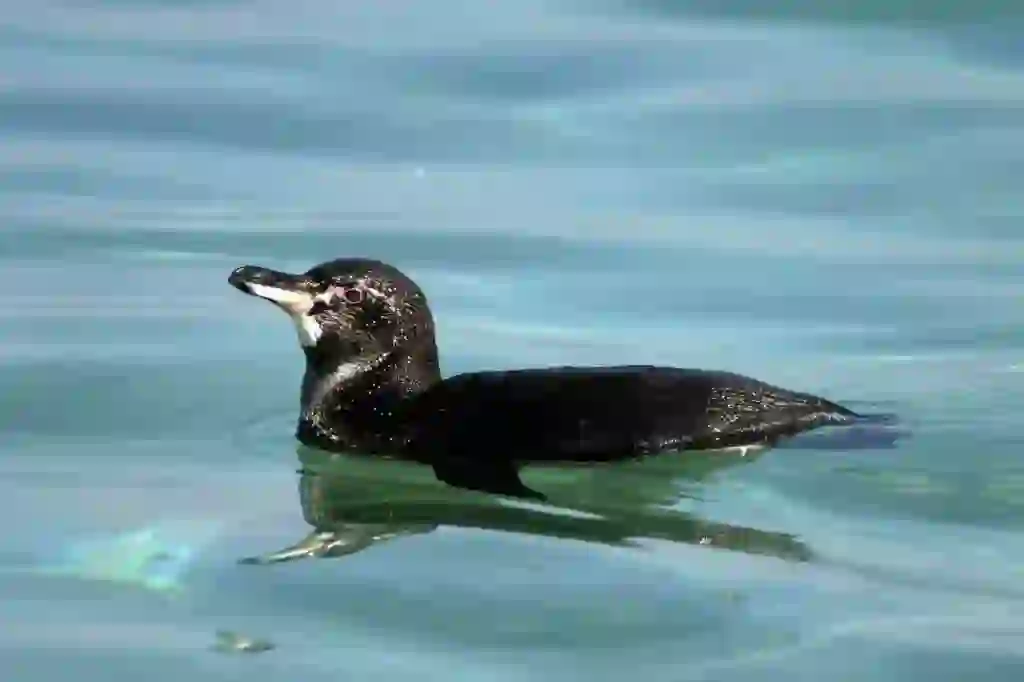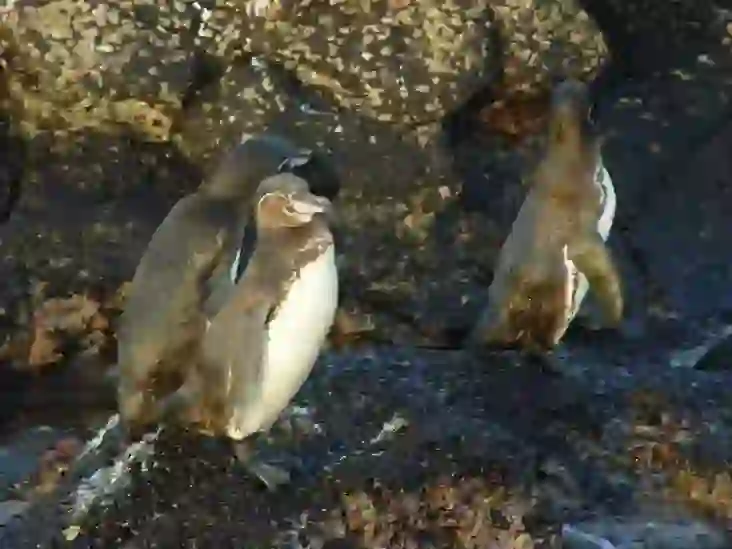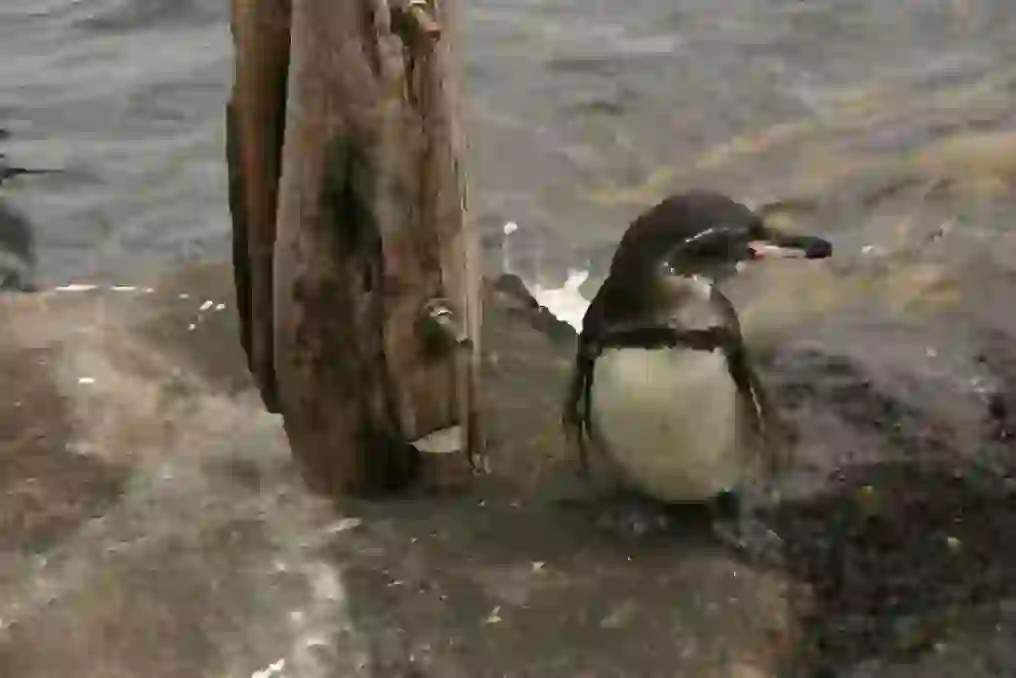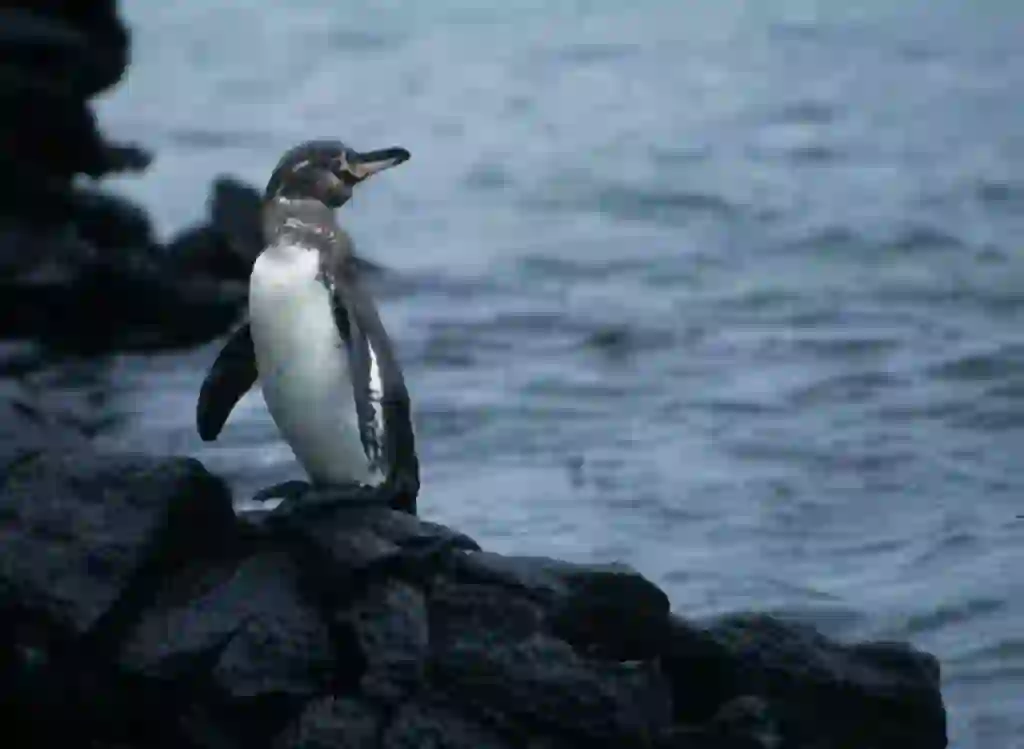
Galápagos Penguin
Galápagos Penguin
Galápagos Penguin
When we think of penguins, we usually imagine them living in cold places. However, the Galápagos Penguin, which I will introduce this time, lives in a warm place right on the equator in the Galápagos Islands! The Galápagos Islands are also famous for their unique animals that have undergone unique evolution. What kind of life do Galápagos Penguins lead on such islands? Let's take a look!
Galápagos Penguin Basic Infomation

Order: Sphenisciformes, Family: Spheniscidae, Genus: Spheniscus
Height: 53 cm
Male: 2.5 kg, Female: 2.4 kg (pre-molt)
Male: 2.1 kg, Female: 1.7 kg (post-molt)
Beak Length: Males: 11.8 cm, Females: 11.4 cm
Flipper Length: Males: 5.8 cm, Females: 5.3 cm
Population: About 1,200 individuals
The Galápagos Penguin is characterized by its black feathers on the top of the head and back, with the belly side covered in white feathers, and two narrow black bands around the neck. The area around the eyes and face is black, but there is a thin white line from the inner corner of the eye to the neck. The upper part of the beak is black, and the lower part is pink. The feet are completely black. It is difficult to distinguish between males and females as they look exactly the same, but generally, males are larger than females.
Although the Galápagos Penguin is similar in body pattern to the Humboldt Penguin, here is an easy way to distinguish them: The Galápagos Penguin has only the lower beak pink, while the Humboldt Penguin has a larger pink area at the base of the upper and lower beaks.
Galápagos Penguin Q&A

What is the origin of the name 'Galápagos Penguin'?
The Galápagos Penguin is a species unique to the Galápagos Islands, hence the name. Its scientific name is 'Spheniscus mendiculus', which translates to 'beggar' or 'small beggar' in English, possibly reflecting the way chicks beg for food from their parents. It is curious that only the Galápagos Penguin was given this name, as all penguin chicks beg for food from their parents.
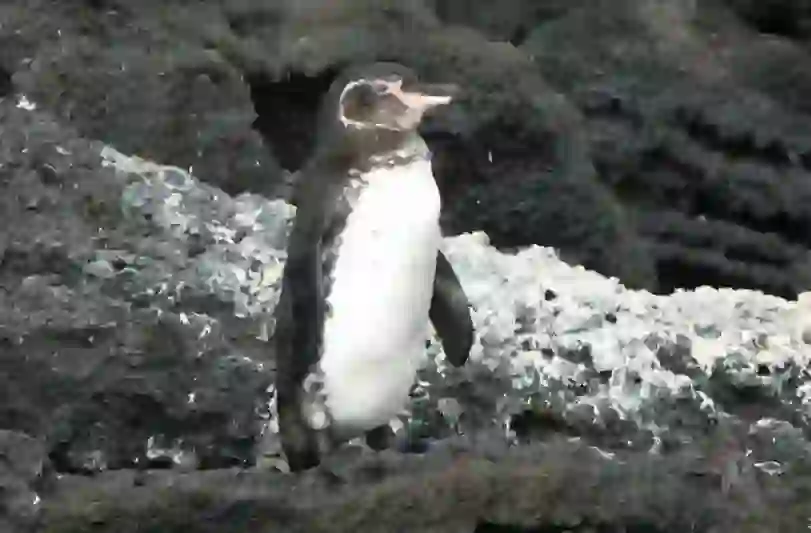
Why do Galápagos Penguins live there?
As the name suggests, the Galápagos Penguins breed and rear their young exclusively in the Galápagos Islands. The islands consist of 19 main islands and several smaller islets and rocks, with confirmed breeding on the eastern part of Fernandina Island, Bartolome Island, Santiago Island, Isabela Island, and Floreana Island.
Fledglings and juveniles often move to Santiago, Santa Cruz, Rabida, Floreana, and San Cristobal Islands.
It appears that Galápagos Penguins prefer these locations, but there is no conclusive information on why. Two possible reasons are considered: 1) The cold Humboldt Current and Cromwell Current provide cold, nutrient-rich waters, which ensure a steady food supply. 2) Small fish like sardines and mullet, which are abundant around the islands, provide an ideal feeding ground.
Further research will likely clarify why these locations are favored by the penguins.

What do Galápagos Penguins eat?
Galápagos Penguins dive into the sea to feed on small fish such as sardines and mullet. Chicks are fed pre-digested fish directly from their parents' mouths.

How do Galápagos Penguins survive in hot climates?
The Galápagos Islands are in a subtropical region where temperatures can exceed 40°C. Like other penguins, Galápagos Penguins struggle with heat. Here are some adaptations they have developed to cope:
1) They swim in the cold waters of the Humboldt Current to cool down.
2) They use panting, similar to dogs, to release heat.
3) They position their bodies away from the sun and spread their flippers to improve air circulation and create shade.
4) They undergo molting twice a year, necessary due to the combination of intense sunlight and frequent swimming, which can damage their feathers.
These adaptations help them manage the challenging conditions of their habitat.

Can Galápagos Penguins really determine their breeding season?
Yes, it's true. However, because the Galápagos Islands are in a subtropical zone with significant sea temperature fluctuations, breeding is timed around a sea temperature of 24°C. When sea temperatures rise above this, the fish dive deeper, making it harder for the penguins to feed their chicks. In years when the sea temperature is high, breeding is less frequent.
Conversely, when the sea temperature is below 24°C, fish swim at shallower depths, making them more accessible for feeding chicks, which leads to more active breeding seasons.
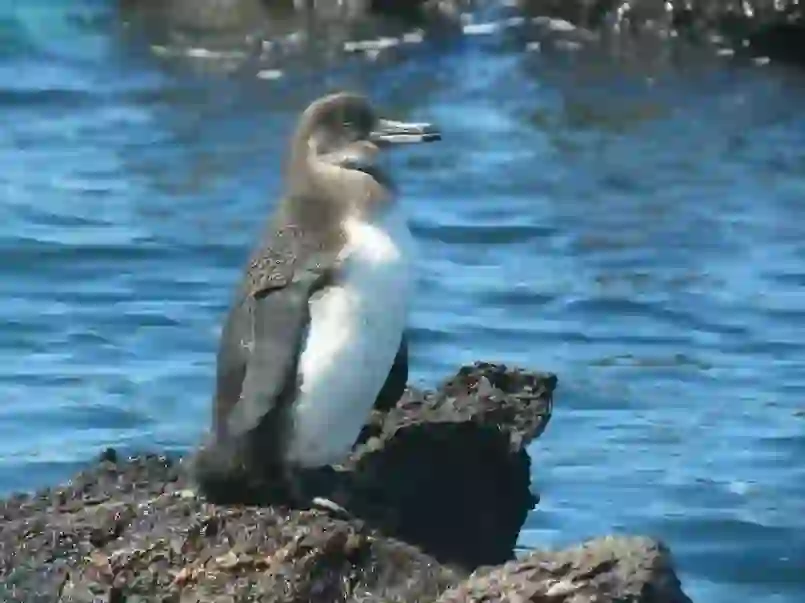
I want to know more about the personality of Galápagos Penguins!
Unfortunately, due to their small population, there has been limited research on the specific behaviors of Galápagos Penguins. Generally, the genus Spheniscus, to which they belong, is known for being quite cautious and can be aggressive, suggesting that Galápagos Penguins may share these traits. More research is eagerly awaited to provide further insights.
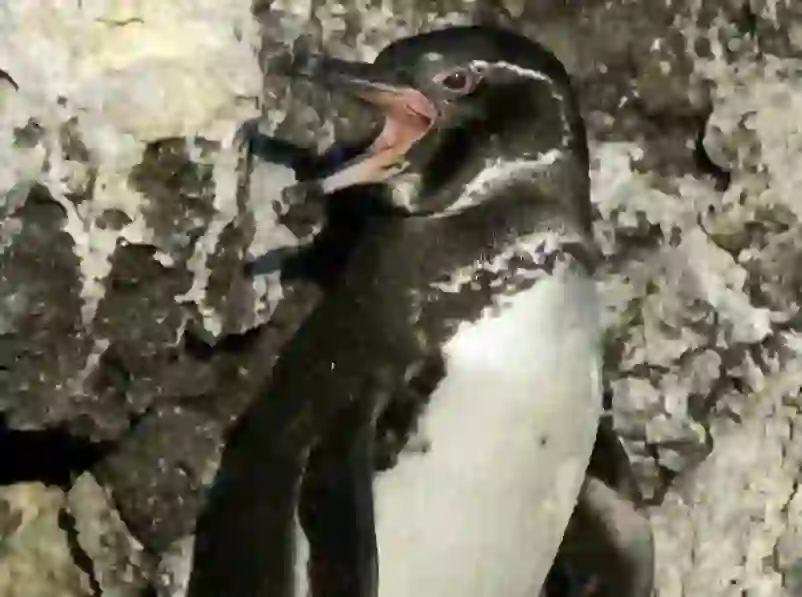
Are there places where Galápagos Penguins can be observed?
As of 2021, unfortunately, there are no locations in Japan where Galápagos Penguins can be observed. However, joining a cruise around the Galápagos Islands is one way to see them. Although it can be expensive, it is possible to book through travel agencies. For those who are determined to see Galápagos Penguins, this could be an unforgettable trip, not just for the penguins but also for the variety of other wildlife on the islands.
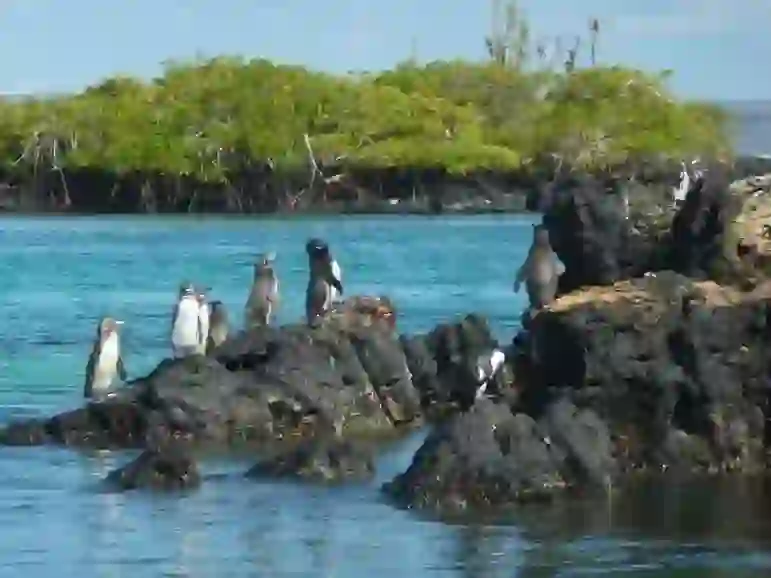
Does the Galápagos Penguin have any natural predators?
The main natural predators of the Galápagos Penguin are birds of prey like hawks and sharks. However, humans may be their biggest threat. The species is currently classified as 'Endangered' by the IUCN. Factors such as climate change, which may be exacerbated by the burning of fossil fuels, and the El Niño phenomenon, which raises sea temperatures, are considered significant threats. Additionally, introduced predators like dogs and cats, bycatch in fisheries, and oil pollution from ships also pose serious risks. Protecting the Galápagos Penguin from extinction will require urgent and effective conservation strategies.
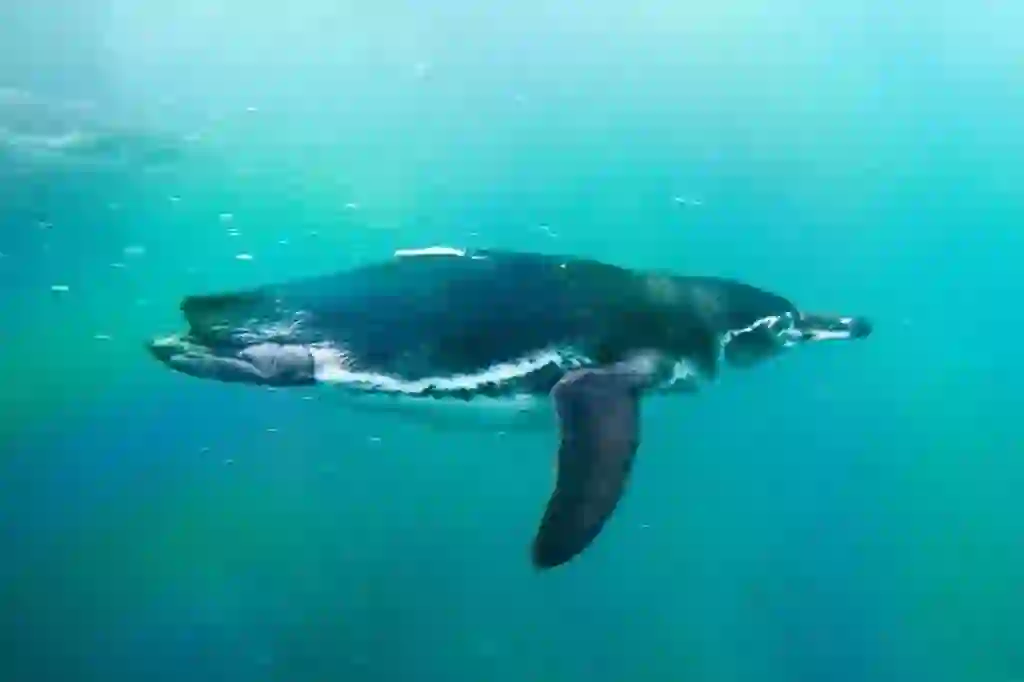
What is the lifespan of Galápagos Penguins?
In the harsh natural environment, Galápagos Penguins have a maximum lifespan of about 11 years.

Would you like to become a part of the 'Animalbook.jp'?
Turn your knowledge into Q&A and share it with the world. ※Publication will be activated after purchase. Let's share information together!
Galápagos Penguin Type of List

- Galápagos Penguin
Information
Congratulations! You are the first commenter!

Create Your Favorite List!
Galápagos Penguin
Save the animals you love! Build your own list to quickly revisit your favorites later.

Would you like to leave a comment?
※Please note: This is for the purchase of rights to post comments within the article.
Find Your Favorites!
Our shop offers a unique and attractive selection of goods themed around various animals.
Galápagos Penguin References
Galápagos Penguin Introduction of media used

出典:https://pixabay.com/images/id-1423771/

出典:https://pixabay.com/images/id-255527/

出典:https://pixabay.com/images/id-1664625/

Help Enrich Our Animalbook.jp with Your Media!
We are constantly looking to expand and enrich our Animalbook.jp with amazing photos and videos of animals. If you have any media that you'd like to share, please contribute and help us showcase the beauty and diversity of the animal kingdom. Your submissions will be credited and featured in our encyclopedia, reaching a wide audience of animal lovers.
















